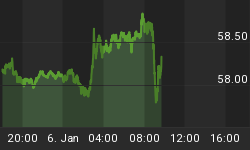The decades-old debate over nuclear fusion vs. fission is on the edge of a breakthrough as startup Commonwealth Fusion Systems wins over Bill Gates and other backers. Norwegian oil and gas company Equinor is one of them. Commonwealth Fuel Systems has a system powered by high-temperature superconducting (HTS) magnets that are key to a push to get a commercial fusion energy system operating by the early 2030s — years earlier than several major fusion projects around the world. CFS, a US-based startup that came from Massachusetts Institute of Technology, is developing its HTS technology to deliver what it claims will commercialize nuclear fusion power. That comes with unlimited zero-carbon energy, and a much more reliable renewable energy source for power plants than intermittent wind and solar.
CFS’ efforts come from a joint project with MIT that by 2025 aims to become the first fusion reactor to show “net energy gain” by producing more energy than it consumes. It will be able to generate 50 to 100 megawatts thermal that could be harnessed to produce power in a conventional steam cycle.
Nuclear fusion has been seen as the answer to diminishing support for nuclear power overall since Japan’s Fukushima Daiichi nuclear disaster in 2011. That crisis was followed in 2013 when the San Onofre nuclear power plant in California was shut down
after replacement steam generators failed; and has so far remained out of commission. Fusion has been championed as the solution as it creates less radioactive material than fission, and has a nearly unlimited fuel supply.
Equinor sees CFS as a good fit for its zero-carbon investment portfolio that already includes offshore wind and solar. The Norwegian company was part of an $84 million funding round for the startup that joined an existing group of investors including oil and gas company Eni and Bill Gates’ Breakthrough Energy Ventures.
Nuclear fusion has always faced the same challenge that hydrogen has endured as an alternative energy. The standing joke is that “fusion is always 40 years away.” Nuclear power advocates may be seeing a sign of hope in hydrogen — with the potential of “green hydrogen” coming to be, fueling stations becoming competitive to gas pumps, and applications of the fuel coming to energy storage and commercial vehicles of all types.
Nuclear has the edge of being taken quite seriously in markets around the world such as France, where the county gets about 75 percent of its electric power from nuclear energy. Fusion does offer a consistent, steady energy source — versus wind and solar facing intermittent weather conditions.
Related: How BlackRock Became King Of ESG Investing
Nuclear fusion advocates face the challenge of the energy being perceived as being theoretical without any real, tangible examples of what the cost of the fusion energy will be. Gains made by other renewables could also hurt their arguments. Wind and solar prices have been falling in recent years, storage units have been taking away some of the intermittent risk, and smart network systems being deployed by major utilities are helping build support. Hydrogen also makes the renewable energy classification, offering government incentives for development and distribution.
CFS is facing serious competition to take the clear lead in nuclear fusion. One of these comes from the International Thermonuclear Experimental Reactor (ITER) project that’s currently being completed in France. It started as a collaboration in the 1980s between the US, the Soviet Union, various European nations, and Japan. India, South Korea, and China joined the consortium years later.
The backers are hoping to bring ITER live in 2025, but the cost has been high — over $14 billion invested so far. The project began construction in 2013, a much longer timeframe for completion than CFS says it can do. CFS also benefits from the fact that ITER and other major test projects won’t even start experiments until 2040 or later.
CFS is also making gains by winning over impressive financial backers. Along with the Gates-backed Breakthrough Energy Ventures, others include MIT’s affiliated investment fund, The Engine; the Italian energy firm ENI Next LLC; and venture investors such as Future Ventures, Khosla Ventures, Moore Strategic Ventures, Safar Partners LLC, Schooner Capital, and Starlight Ventures.
“We are investing in fusion and CFS because we believe in the technology and the company, and we remain committed to providing energy to the world, now and in a low-carbon future,” said Sophie Hildebrand, Chief Technology Officer and Senior Vice President for Research and Technology at Equinor.
By Jon LeSage for Oilprice.com
More Top Reads From Safehaven.com

















